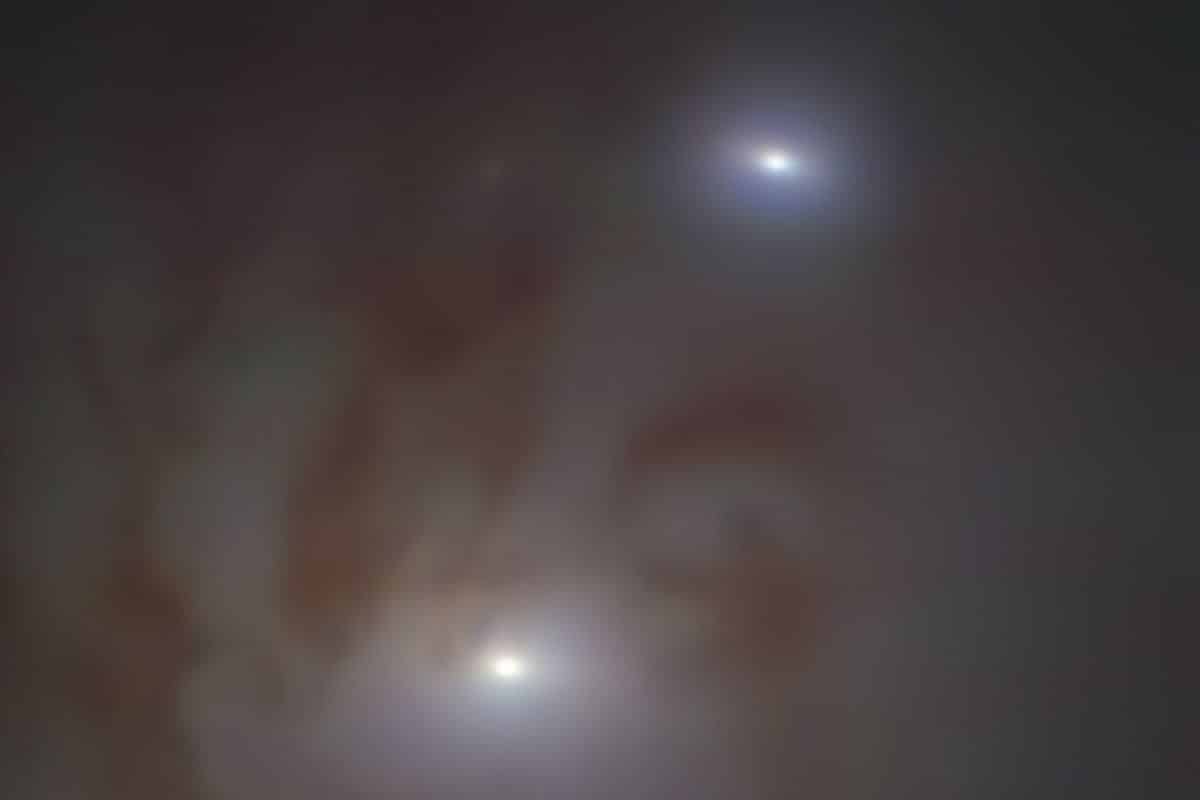Astronomers have discovered a pair of supermassive black holes that are record-breakingly close to Earth. And these two black holes are also in danger of merging into what researchers call a “monstrous black hole” in the short term.
That can be read in the magazine Astronomy & Astrophysics. The research paper in question deals with two supermassive black holes located in the galaxy NGC 7727. The black holes are about 89 million light-years from Earth. That means it takes light 89 million years to travel from us to these two supermassive black holes. The distance between us and the two supermassive black holes is therefore considerable, but much smaller than the distance to the closest pair of supermassive black holes known to us until recently, which is located 470 million light-years away.
Recordbrekers
The two supermassive black holes in NGC 7727 will go down in the books as the closest pair of supermassive black holes discovered to date. But not only that; the distance between the two supermassive black holes is also record-breakingly small. Seen in the sky, the two supermassive black holes are only 1,600 light-years apart. “It’s the first time we’ve found two supermassive black holes so close together — their distance is more than twice that of the previous record holder,” said researcher Karina Voggel.
Monstrous black hole
The relatively small distance between the two supermassive black holes tells us by the way more about their future. “The close distance and speed of the two black holes indicate that they will probably merge into one monstrous black hole within 250 million years,” said study researcher Holger Baumgardt.
Black holes are really nothing but regions of space with a very strong gravitational pull from which nothing can escape. Even light particles cannot escape the grip of black holes and are therefore invisible. However, researchers can detect black holes. For example, on the basis of high-energy radiation that is released when the black hole attracts matter. Or because the black holes pull on surrounding stars with their gravity.
super heavy
It has been suspected for some time that NGC 7727 harbors black holes. But thanks to observations made using ESO’s Very Large Telescope and Hubble Space Telescope, we now know for sure. Researchers used the observatories to determine whether stars in NGC 7727 were sometimes influenced by invisible, but actually present, black holes. And with success. Because the motions of the stars reveal that the galaxy is home to two black holes: one with nearly 154 million times more mass than the sun and one with 6.3 million times more mass than the sun. This puts both heavy holes in the ‘super heavy’ category.
Merging galaxies
Supermassive black holes are known to reside at the center of massive galaxies. When two of those galaxies merge, the supermassive black holes they harbor come on a collision course. And that is what we now see happening in NGC 7727. The two supermassive black holes are only a short distance apart. When those supermassive black holes also merge, one even more massive black hole is created.
More
That NGC 7727 is the result of two colliding galaxies is nothing new; both the peculiar shape of NGC 7727 and the star streams in the outer reaches of the galaxy bear witness to this. But now two more ‘silent’ witnesses have been discovered: the supermassive black holes. The fact that these two supermassive black holes have taken some time to detect can, of course, be partly explained by the fact that black holes are invisible. What also did not help in this case is that the two black holes do not emit large amounts of high-energy radiation. For a long time the supermassive black holes managed to remain undetected like this; only when researchers discovered that they affect nearby stars could the existence of the supermassive black holes be confirmed. It got the scientists thinking. Because might the same play out in other (near) galaxies? “Our discovery implies that there may be many more of these remnants of merging galaxies, which harbor massive black holes waiting to be discovered,” Voggel said. “This could increase the total number of supermassive black holes known in the local universe by 30 percent.”
On the right you see NG7727; the somewhat messy result of two colliding galaxies. On the left is a close-up view of the same galaxy. In that image you can see two bright galactic nuclei. At its hearts are the two supermassive black holes. Image: ESO/Voggel et al.; ESO/VST ATLAS team. Courtesy of: Durham University/CASU/WFAU.
–
So there is still much to discover. In that regard, researchers are eagerly awaiting the commissioning of ESOs Extremely Large Telescope. This powerful telescope is expected to detect many more supermassive black holes, says researcher Steffen Mieske. “This detection of a pair of supermassive black holes is just the beginning.”
–


